|
This post was updated in July 2022.
I spend a lot of time in the car. While my students don't live particularly far from me, I live in Los Angeles, and traffic is ubiquitous. Over the last couple of years, the one thing that has made all that driving more bearable is podcasts. I love to keep a mix of genres in my app: news, business, professional development, inspiring, entertaining, and just plain fun! Below I have compiled a list of some of my favorites, sorted by category. I'll keep this list updated as I discover new ones too! (Updated July 2022) Piano Teaching If you've been in the online piano teaching space for a while, you are probably aware of most of these, but if you're not, you should definitely be subscribed to these! The TopCast with Tim Topham--this is by far the best podcast out there for piano teachers. Tim covers a huge span of topics from teaching ideas, to business and marketing. It's really a one stop shop for running a successful piano teaching business. The Vibrant Music Teaching Podcast with Nicola Cantan--this one is new on the scene, but I love that the episodes are short and sweet. They're about 15 minutes long and get right to the point. You leave each episode with something actionable that you can apply to your business and teaching right away. The Piano Parent Podcast with Shelly Davis--this podcast is actually directed at parents of piano students, but I think it's a great one for us to listen to as teachers as well. You'll get lots of insights on how to communicate well with the parents in your studio. Definitely recommend this one to your studio parents too! Key Ideas with Leila Viss--a mix of teaching ideas from Leila Viss and fantastic interviews with industry powerhouses. Business There are a million business podcasts out there, and it can get really overwhelming trying to choose one to listen to. Here are a few of my favorites: Teach Music Online with Carly Walton--Carly Walton has a gift for making technology accessible for even the tech hesitant. Each episode is packed with great business and teaching ideas for online or hybrid teachers, and even those who teach mainly in person. Music Lesson Business Academy--this podcast is exactly what it sounds like. Danny Thompson owns a music academy in Southern California, and this podcast is full of great advice and in the trenches experience. The Music Studio Start Up Inspirational Happier with Gretchen Rubin--I never miss an episode of Happier. It's kind of like Real Simple Magazine, if it were a podcast. Each week you get tips, hacks, and ideas to make your life happier, healthier, and more efficient. Happier in Hollywood--This is a sister show to the Happier Podcast, literally. It's hosted by Gretchen Rubin's sister Liz, and her writing partner Sarah. It's a fun look into what business in Hollywood looks like, but even those of us who don't work in television can get a lot of great ideas from this show! Just for Fun Getting Curious with Jonathan Van Ness--Before it was a show on Netflix it was an awesome podcast! Jonathan has this actually really great podcast that tackles all kinds of topic from the difference between British and American English to the impact of family separations at the border on children. He's also interviewed all of his fellow Fab Five cast members. Office Ladies--This rewatch podcast of The Office with Jenna Fischer and Angela Kinsey is so much fun. I've learned a lot of fun behind the scenes things, and they often have great guests including fellow cast members, guest actors, directors, and behind the scenes people like the props master. News Lately I've been getting a lot of my news from daily podcasts. Any news outlet you prefer has one at this point. I listen to UpFirst from NPR.
3 Comments
I once heard Carol Matz say in an interview that she tries to avoid "ice cream songs." Ice cream songs are those pop songs that are popular for 5 minutes, but by the time you arrange them for piano students, they've lost their appeal. Today's featured arrangement is definitely not an ice cream song, and what's even better, it will appeal to students of all ages! If you teach adults, they'll remember Cyndi Lauper's original from the 80s. Your littles and elementary age kids will recognize it from Trolls. The message of this song is timeless, and it sounds beautiful on the piano. This arrangement is great for beginners who can reach a 7th, and even though it's pretty simple to learn, it sounds full and sophisticated. More intermediate students may have fun adding their own embellishments. You can see and purchase True Colors here. Let me know how you like it! May is a crazy time for students, teachers, and parents. The school year is wrapping up, there's testing, recitals, programs, open houses...you get the picture. We have a lot going on!
A few weeks ago Gretchen Rubin did a feature on her podcast about surviving a "Season of Stress." I love this terminology because it reminds us that these crazy times only last for a time. It's going to end eventually! If you have the chance to listen to this episode, I'd highly recommend it! It's full of lots of great ideas. This spring has definitely been super crazy for me! Here are a few things that really help to keep my from losing it when times get nutty: 1. Stay organized. As much as possible. When I'm in the middle of a stressful time, it can be really easy for my stuff to get out of hand. It feels so much easier to just drop things wherever than to put them back where they belong, but it doesn't take long for things to get out of hand, and clutter is a huge stress amplifier! I'm not saying this is the time to reorganize my closet or clean out the garage, but it is a time to keep things where they belong. I do the dishes before I go to bed. I fold the laundry and put it away. I hang my keys up when I walk through the door. These little things don't take a lot of time, but they make every day tasks so much easier. 2. Meal Plan and Batch Cook. Eating well and staying healthy is really important during seasons of stress. These 2 strategies help me to make sure I'm eating well. Not everyone loves to meal plan, but it's a necessity for me. If I don't have a plan or some easy, healthy food in the fridge, my options are really limited. I like to use Real Plans. The app is really fun to use, the recipes are great, and it's really customizable, which makes it great for everyone! Some people love to batch cook full recipes and just live off of the leftovers. There are certain recipes that I might do this for, but in general, I tend to batch cook components of meals. I'll roast up a bunch of extra veggies, roast a whole chicken when we only need half of it, and my favorite trick: make a huge batch of shredded pork, chicken, or beef in the Instant Pot, and reimagine the leftovers throughout the week. 3. Take some time for myself. When things get busy, it's really easy for me to put myself last. I spend all of my energy on other people, and I don't realize I'm burning out until it's too late and I'm getting snippy with people. I am definitely not a morning person, but a trick that has helped me find time for myself is to get up earlier. If I get up before everyone else, I have time to take a walk, spend a little time reading, and plan out my day before the responsibilities of the day begin. What are some strategies that you find helpful during seasons of stress? Let me know in the comments! Have you ever thought about online or video lessons?
To be honest, until very recently, I hadn't. I like teaching in person. My piano space is limited. I don't have room in my budget right now for new tech. I don't need new students or want to extend my teaching hours. I didn't think my families would ever get on board with remote learning. All of this changed about a month ago when I started the Online Lesson Academy from the Upbeat Piano Teachers. I've taken many webinars from the Upbeats, and I'd always been so inspired by them. This past summer I took part in their Planning Academy, and it was a whole new experience. The live group coaching format of these Academies is unlike anything else out there right now for piano teachers! This Online Lesson Academy was so inspiring! Here's what you get:
What do you learn exactly? This academy is so jam-packed! You get everything you need to get started teaching online or via video. You'll learn all about the technology needed (and that you probably already have all of the tools you need to get started), different platforms you can use (and exactly how to use them), ideas about scheduling, writing policies, getting parents on board, how the lessons will actually flow, what kind of activities work well in an online format, how to physically set things up at the piano, etc. They really leave no stone unturned. So what were my favorite parts?
A caveat: do not register for this class if you are in a busy season because it is time consuming. Between the live coaching, the group discussion, and the assignments, you really do need a little time every day (and sometimes a little more than a little) to get the most out of the Academy. That being said, you do get lifetime access to everything, so you can go back at any time to watch or re-watch videos and complete assignments. The group is archived a couple of weeks after the Academy ends, but you are invited to join the private Upbeat Mastermind Group, where you can always continue the discussion or ask questions as things come up. My over-all impression: This class is WORTH IT! Even if you're just tossing the idea around in the dreamy part of your brain right now, the practical tools and ideas you get from the Online Lesson Academy can open up some brand new possibilities for your studio and your business. If you're interested in the Online Lesson Academy, you can get more information here. Registration is currently closed, but they do plan to offer more sessions in the future, so definitely check it out. Have you ever thought about teaching online or video lessons? If so, what's holding you back? Yesterday was International Women's Day, "a global day celebrating the social, economic, cultural, and political achievements of women" (link).
Piano playing developed as a generally female activity, and since it's earliest emergence as a profession, the majority of private piano teachers have been women. (If you're interested in reading a fascinating series on the social history of piano teaching, click here.) Composing, however, especially in the professional sense, was almost always relegated to men. We see very few female composers in our standard teaching repertoire, and it's very rare to hear music by a female composer on your local classical radio station. This doesn't mean that women haven't been creating great music for centuries. We just have to know where to look! Listen: For your listening pleasure, check out this Spotify playlist put together by NAXOS. Anthologies: These two collections are great for a broad overview of piano music by female composers. They both include a little biographical information about each of the composers. Women Composers in History At the Piano with Women Composers By Composer: Amy Beach:
Cecile Chaminade:
Clara Schumann: both of these collections are great for advanced players For Your Littles: Here are three great little books from Kiddy Keys: I hope these resources can get you started exploring the works of these great women with your piano students. Know of any other great resources out there on female composers? Let me know in the comments. Let's share the wealth! This is the second post in a series. Check out Day 1 of the 12 Days of Inspiration over at Colourful Keys! Check back for links to the rest of the days at the end of this post. Who else was sooooo ready for this break? I definitely found myself spread a little thin these last few weeks, and I'm really excited for my vacation...which has technically already started...but this is a short post, and I'm writing it in my pajamas with my cat in my lap. Breaks are great! Taking vacations has been proven to reduce stress, keep you heart healthy, improve mental health, and improve relationships (source). Vacations are also shown to increase productivity and creativity (source), two things that are vitally important to us working artists. A number of surveys have shown that Americans don't take advantage of all of their paid days off, and I know from experience that it's even worse for those of us who don't have traditional paid vacation time each year. The thing is though, we entrepreneur/teaching artists need to take time off! Without it, we will suffer from burnout, decreased creativity, and compromised mental and physical health. I hope you just decided that you are on vacation with me now. If you somehow end up in Pasadena, let's get lunch! Ok, so you're on vacation, but you want to make the most of it, right? You want to come back from your break refreshed, reenergized, and ready to take on the world. How do we do that? Yes, there will be quite a bit of sitting on the couch with your cat and a book (for my fellow introverts. You extroverts out there are probably going to want to do all kinds of exhausting things like having lunch with your friends and taking your kids to Disneyland. To each his own.) But if you really want to make the most of your time off, I'd like to suggest that you do 2 things: 1. Reflect Take some time to look back at this past semester. What went well? What got you excited? What were some of your favorite moments? What are things you're never going to try again? What caused you stress and anxiety? This is not a planning session. You should set aside some time at THE END of your vacation, after you've read all your books and your cat has grown tired of you, to do some planning. I have my planning session scheduled for next Monday. This is mental and emotional unloading. Write these things down, get out your journal/notebook/computer/this handy pdf, and let it all out. This is especially important for external processors who don't want all of their friends and loved ones to avoid them because they're unloading everything on them (I do this all the time. My cat doesn't mind. The humans in my life tire of it quickly.) 2. Reconnect This one is multi-faceted. There are many things in our lives from which we can become disconnected when we're busy. Time off is the perfect time to reconnect with those things, and you will be much happier for it. Reconnect with loved ones. The holiday season can get really busy, and it can be really easy to lose touch with the people we care about the most. I hope you got to spend some quality time with your loved ones over the holidays. Keep reconnection in mind over the next few days. Have lunch with a good friend you haven't seen in a while. Call your mom. Put your phone in the other room and actually talk to your family. Relationships enrich our lives. They give us a sense of belonging. Take some time to nurture them. Reconnect with your art. We are music teachers. We are artists sharing our art with the next generation. I don't know about you, but when I get busy, the first thing that goes is my piano time. I might practice things that I need to learn for performances, but I don't play for fun. I don't spend time being creative at the piano, and my students can tell! You can't pour from and empty cup, so spend some time at the piano. If you're on vacation away from home, play the piano in the hotel lobby until someone asks you to stop, or find another creative way that you can reconnect with your art. I'm not just a pianist, and I imagine most of you also have other creative outlets and crafts. Spend time doing those things too. Crochet a scarf for a friend, write a new song or poem, spend some time working on that detective novel. Whatever you do, let your creative juices flow! If you spend some time doing these two things over your break, I can guarantee that you will feel refreshed and ready to go when you get back to work. One last thing: Don't think of these things as chores, or things to check off your to-do list. This is what vacation is for. If should be fun, relaxing, and on-going. Need a little help getting started? Here's handy pdf to get the juices flowing:
Check out the rest of this series here:
Day 3: 3 Simple Ways to Reduce Stress at Music Educator Resources Day 4: New Year's Resolutions for Your Studio at Violin Judy Day 5: 5 Ways to Reset Your Music Studio After the Holidays at Pianosaurus Rex Day 6: 6 Things That Should Happen at a First Piano Lesson at Pianissimo: A Very Piano Blog Day 7: 7 Tax Deductions for Music Teachers at Sara’s Music Studio Day 8: 8 Questions to Bring Your Studio into the New Year at Fun Key Music Day 9: 9 Ways to Increase Your Studio Retention at Woods Piano Studio Day 10: 10 Impressive Benefits of Learning Piano By Ear at Piano Picnic Day 11: 11 Finds for the New Year at Piano Pantry Day 12: 12 Tips for Teaching Tricky Personalities by Tracy Selle A CHRISTMAS SEASON SURVIVAL GUIDE FOR PIANO TEACHERS...PART 2: AVOID WASTING TIME IN DECEMBER12/11/2017 Recently on social media a fellow teacher expressed concern that she was wasting time this holiday season because she was spending most of her lesson time on holiday music, games, and fun activities, rather than moving forward in the lesson books and introducing new concepts.
I understand the inclination to feel like you're wasting time if you're not moving forward, but I'd like to argue that, with most students, it's a waste of time to introduce a lot of new things in December. When the holiday season kicks off after Thanksgiving, children are overwhelmed and distracted by everything else that's going on around them: Families are shopping and participating in holiday traditions. Kids are busy making wish lists and Christmas cookies. They're rehearsing for plays and school programs. They're planning for trips to visit relatives. And then there is the recent trend of giving final exams to children in Elementary and Middle School! Adding to this overwhelm with new musical concepts and practice demands can be counterproductive, so let me offer an alternative: Review Season! In my studio I do review season twice a year in December and in June. Review Season is two-fold, and here's what it looks like: 1) We take a break from lesson books and concentrate on fun repertoire that is not overly challenging. This usually means a Christmas book or a few engaging holiday pieces. For Christmas music recommendations, see my previous post here. Some students aren't interesting in playing holiday music, and that's totally fine, but I still like to give them something fun to work on this time of year. Here is a great collection of "wintery" pieces by Dawn Ivers that your students will love! Christmasy or not, I want these pieces to review concepts that students have been working on this year. They should present some sort of challenge, but nothing that can't be worked through in a week or two. My goal is for students to have a handful of pieces that they can play for their families over the break. 2) We play LOTS of games! My favorite way to combat Holiday Season Overwhelm is by making learning extra fun. We normally play games frequently in lessons, but this time of year I make sure to have lots of holiday-themed fun with me at all times. I always play at least one game, sometimes more, in every single lesson, even with older students! Games can be a great way to review reading concepts, musical terms, rhythm, and all kinds of other theory concepts. Here are a few of my favorite free games to get you started: Heave Ho Ho Ho! from Teach Piano Today to review Cs on the grand staff Reindeer and Elves Keyboard Race from Susan Paradis to review piano keys Gift Grab from Colourful Keys to review musical terms and symbols These are not necessarily games, but they are great activities to include in your Holiday Review Season as well: Holiday Rhythm Cup Explorations from Compose Create. (this is not free, but it is SOOOO worth the cost!) Top 5 Christmas Piano Printables from Teach Piano Today. Follow this link for some fun holiday composing, improv, and practice activities. Before I instituted Review Season, I had to spend a lot of January reviewing concepts students had learned in the fall. Spending December on review helps students to solidify their learning. They come back from the break confident and ready to push ahead. What are your favorite review activities? A CHRISTMAS SEASON SURVIVAL GUIDE FOR PIANO TEACHERS...PART 1: AVOIDING CHRISTMAS MUSIC BOREDOM11/17/2017 Hi Everyone!
Sorry I've been away for so long. Life happens, but I am super excited about this new series: A Christmas Season Survival Guide for Piano Teachers. We all know how it goes, Halloween is over, it's time to print out 25 copies of Jingle Bells for your beginners and 15 copies of Carol of the Bells for your Intermediates. People tend to fall into 2 categories when it comes to Christmas music: 1)Those who LOVE Christmas music and can't wait until their spouses and roommates will allow them to turn on the Pandora Holiday Playlist, and 2) Those who absolutely hate listening to the same 5 songs in various arrangements over, and over, and over, and over throughout November and December. I happen to fall into the former category, but I have plenty of empathy for those who do not. These categories easily flow into Piano Teacher-hood. There are those of us who love shopping for new collections and arrangements each year, who can't wait to start helping students prepare for holiday recitals and playing for family. Then there are those who don't teach holiday music at all and go about November and December as if the whole world has not been covered in glitter and twinkle lights. Many may fall somewhere in the middle. I'm a big fan of spectrums when it comes to categorizing people. Whether you're a Buddy or a Scrooge or something in between. I hope this series is helpful for you. The first topic I'd like to address is a big one. Repertoire. Now, I know many of you have already had your repertoire selected for months and your students are soon going to be wowing their families at Holiday recitals, but I'm sure there are others out there like me, who have started handing out holiday pieces but could still use some fresh ideas. It's still a week before Thanksgiving after all! Here are a couple of tips, ideas, and repertoire suggestions that have me really excited this year: 1. Have your students make their own arrangements this year! I'm sure you've figured out by now that I love giving students ownership of their own music, and I love giving them the tools to make pieces there own. Christmas music is a great place to have students warm up their creative muscles. The songs are (for the most part) familiar and a lot of them are hymns that follow fairly simple chord progressions (although no one says they have to stay simple!). The simplest way to do this is to give your student a lead sheet of a Christmas Carol and help them to use it to create their own arrangement. Have them learn the melody and the chord progression, test out a few accompaniment patters, maybe add and introduction or a flashy ending. Ta-da! They have their very own Christmas Carol arrangement that I'm sure they'll enjoy playing much more than anything you give them that's been arranged by someone else. This one is THEIRS. Follow your student's lead on this. Push them to use what they know to get creative. If they're far enough along in their studies, help them to change a few of the chords, or maybe change the progression all together! The sky is the limit here. It's pretty easy to find lead sheets of Christmas carols online, but if you want something with a few more resources and a bit more instruction, I really like this little booklet from Anne Crosby Gaudet: Chord Town Christmas 2. Seek out fresh arrangements. Sometimes the solution to repertoire boredom is simply finding something new. How many times have you taught that same arrangement of Jingle Bells from the book that goes along with your method series, right? Let go shopping! Here are a few of my favorites lately: Jazzy Jingles by Jennifer Edlund If you're reading this on the day I've published it: November 17, 2017, follow that link right now. It's on SALE! This is my absolute favorite collection of Christmas pieces that has come out in recent years, and there is a second volume that was just published this year. These pieces are really simple to play. Late elementary to early intermediate students will find them really accessible, and they sound so grown up! The harmonies are sophisticated and interesting, and the pieces fit really nicely under even small hands (I don't think there are any intervals over a 7th). Your contemplative students will love Silent Night and He is Born, and your fast fliers will eat up Patapan. This is my go to early intermediate students, and I love playing these pieces too! Up on the Housetop by Wendy Stevens Do you have some beginners this year? Please give them this instead of Jolly Old St Nicholas. There are 4 versions, both on staff and off, with 8ths notes and without. Wherever your new littles are at, they can handle this, and it is SO MUCH FUN! The teacher duet is upbeat and exciting, and the students get to play all over the piano and glissando! Have you ever met a kid that didn't like playing a piece with a glissando? I haven't. Wendy's trick to use an index card helps protect little hands from getting hurt so the fun can continue while you play this over and over! The Christmas Waltz by Yours Truly Shameless plug: I made this arrangement. It is one of my FAVORITE Christmas Songs. This arrangement is easy to play with some nice sounding harmonies, and it's not Jingle Bells. It's a perfect fit for tweens and adults and anyone else playing at a late beginner, early intermediate level. What are some of the ways that you avoid repertoire boredom this time of year? Let me know in the comments! Piano teachers' views of popular music seem to run the gamut. Some think its garbage akin to slang and curse words when compared to real literature (aka classical music). Some don't mind it and will allow students to play a "fun piece" from a score occasionally, to keep them motivated. Others see value in it for teaching theory. Personally, I think pop music is valuable in a few different ways: 1. It is the music of our time. It's what students are listening to, and it's a way to meet them where they are. 2. It's extremely useful for ear training and theory. 3. It's an outlet for students to be creative. 4. It's useful and marketable. If students are well versed in improvising, arranging, playing from lead sheets, chord charts, and simply playing in a popular style, a wide world of job opportunities opens up to them that they wouldn't have with mere classical, score-reading, training. 5. It's fun! I'm happy to see a trend among music teachers to embrace pop music, but have we ever taken the time to think about what our goals are in teaching it? There are a lot of approaches we music teachers can take to teach popular music to our students. -finding a good arrangement and playing from a score -playing from a lead sheet and improvising different left hand chordal patterns -playing from a chord and either working out the melody by ear or singing along -figuing the whole thing out by ear from a track If we have goals in mind, it can help shape our approach. These are mine: 1. To introduce students to the characteristic aspects of pop music: syncopation, driving beats, strong melodies, interesting licks, those dreaded earworms! 2. To strengthen students' understand of keys, chords, and chord progressions. 3. To develop students' ears and abilities to play by ear. 4. To encourage creativity, and to give students to tools to create their own arrangements and original compositions. With this in mind, here's how I typically teach pop music: If a student asks for a specific song, I'll check to see if there's a good arrangement available at their level. If there is, we might learn the song from the score while discussing things like the form, chord progressions, rhythmic elements, technique involved, etc., much in the same way you might approach a classical piece. The benefit of this is exposure. The student gets to the chance to see what a solid piano arrangement of a pop song looks and sound like. It gives them vocabulary that they can use in their own arranging and composing. If there is no good arrangement, (or sometimes if there is, but I don't feel like using it), I'll look for a lead sheet. I probably teach 70-80% of pop music from lead sheets. They allow students to see what the melody looks like and how it lines up with the chords, and of course, it gives us lots of opportunities to discuss chords, accompaniment patterns, and arranging. Lead sheets are great for all levels too! Young students can usually get away with open 5ths on the roots of the chords, while using their ear and knowledge of the song to aid in the rhythmic reading of the melody. As students grow, they can begin exploring what the rest of the chord symbols mean, improvise interesting patterns with their left hand, and even add some harmony notes to the right hand or give the left hand a chance at the melody. Lead sheets give students a framework on which to build their own arrangements. If I can't find a lead sheet, or the student is really interested in playing along with themselves while they sing, or perhaps want to play in a band or at church, I'll either find a chord chart, or we'll make one together. Making chord charts with your students is an awesome way to work on their ear. If students can figure out what key a song is in and hear the chord changes, they are set to be able to basically play anything they want. A lot of popular musicians and even church musicians can't read music, but they read chord charts. It's an important skill, and actually a pretty easy one to master. Something I've been doing a bit more of lately is a hybrid arrangement/lead sheet. It sort of a super simplified piano/vocal/guitar score. Basically I'll half-way arrange a song to the point where it sound good, even if you just play what I wrote. I'll highlight the important elements of the song, bring out some of the rhythmic patterns, etc. I also include all of the chord symbols, lyrics, and guides to the form (chorus, verse, interlude, bridge, etc.). These are useful when students are still working on voice leading in chord progressions and when they are starting to work on more sophisticated arranging. It gives them some of the vocabulary, like a scored arrangement would, but it leaves room for them to get creative and make the arrangement their own, like a lead sheet. I recently made such an arrangement of Don't Stop Believing' for a student who asked to play it. We started out working from a lead sheet, but he was having trouble placing the rhythmic chords against the syncopated melody and also with the places where he wanted the melody to be in the bass, so I notated it for him. He's already got some ideas for making it his own once he gets the basics down. I also left the guitar solo section blank, so he could improvise his own solo. If this approach sounds like something your students would benefit from, and you have some Journey fans, you can purchase my arrangement here: www.sheetmusicplus.com/title/20527616
What are your goals in teaching pop music? How do you approach it with your students? Let me know in the comments! |
Mallory ByersI teach piano in California. Here are some of my thoughts. Archives
July 2022
Categories
All
|
||||||
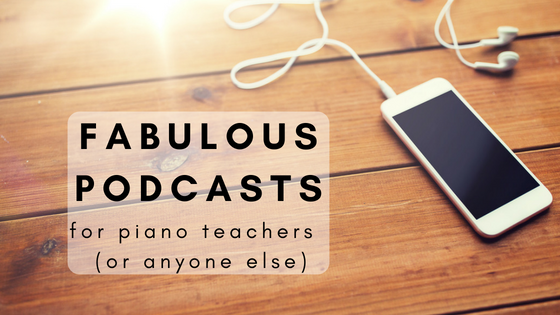
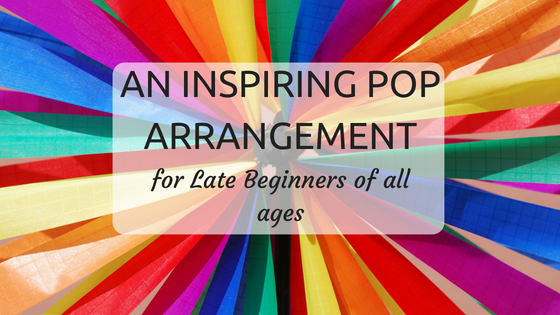
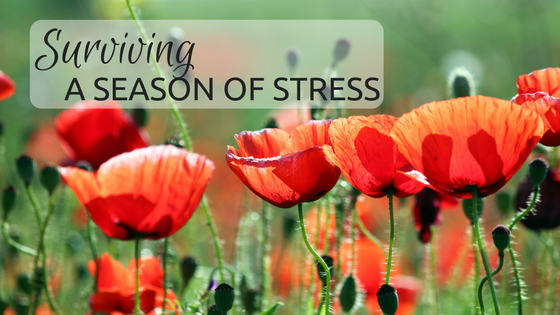
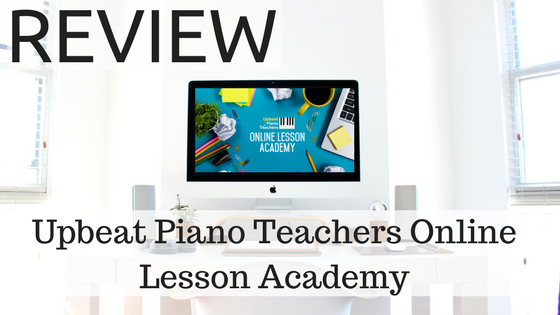
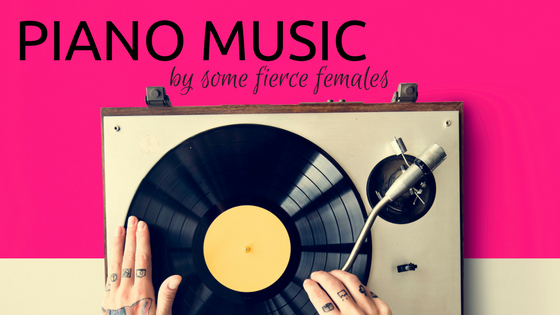
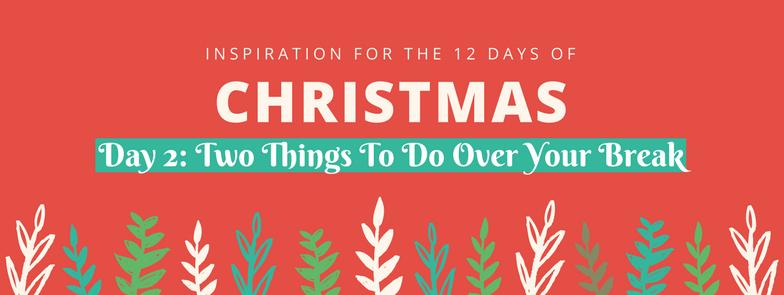
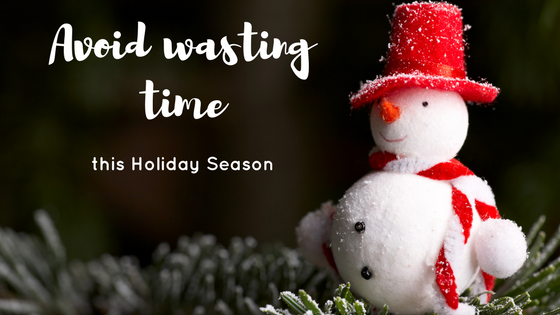
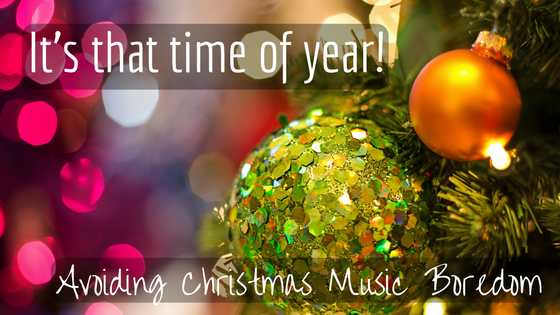
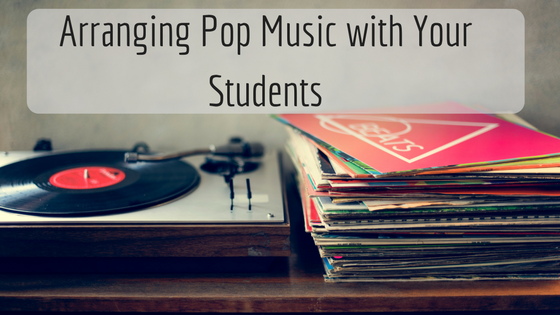
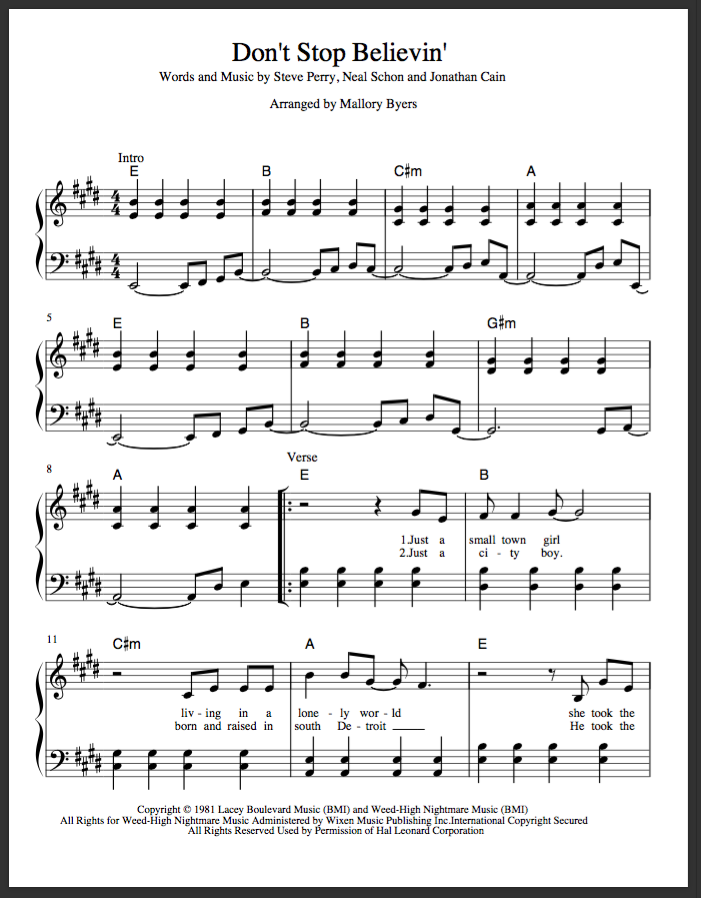
 RSS Feed
RSS Feed